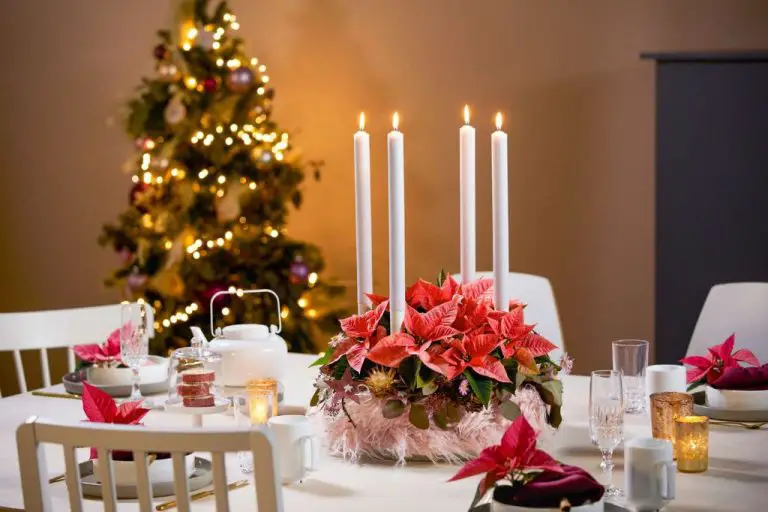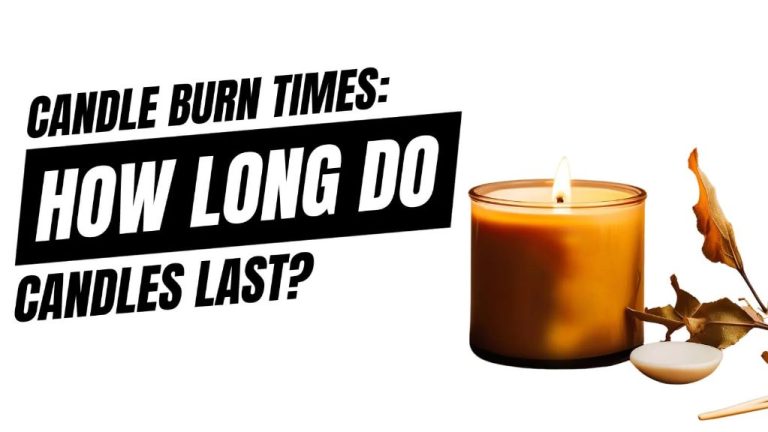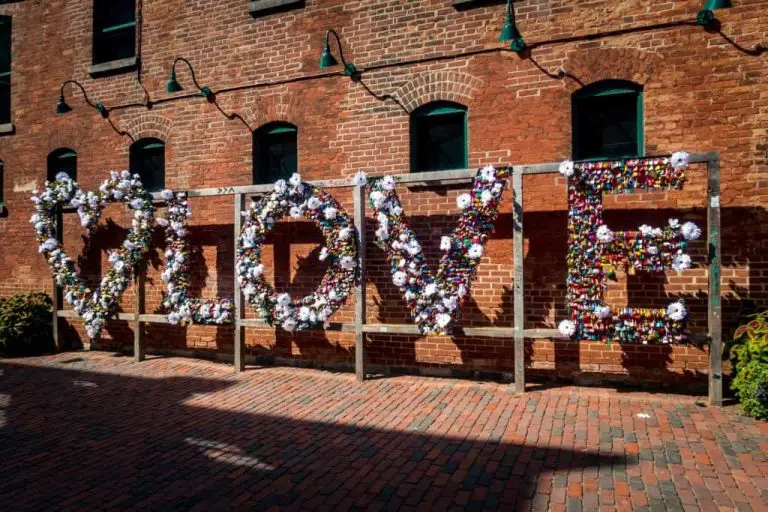Is Vanilla A Fall Scent?
The sweet, warm scent of vanilla has become synonymous with autumn traditions. Cinnamon, nutmeg, and pumpkin spice may come to mind first when you think of fall fragrances, but vanilla deserves a place on the list as well. Though subtle, vanilla’s comforting aroma conjures up images of changing leaves, cozy sweaters, and nostalgic childhood memories.
But is there really a connection between vanilla and fall, or is it all sentimentality? This article will explore the history and science behind vanilla’s associations with the autumn season. We’ll uncover how and why vanilla came to represent the sights, flavors, and feelings of fall. From vanilla-scented candles to seasonal desserts and drinks, we’ll highlight vanilla’s starring role in many favorite fall pastimes. After reading, you may find yourself adding more vanilla into your home and recipes this autumn.
History of Vanilla
Vanilla originates from the vanilla orchid (vanilla planifolia), a plant native to Central America and southeastern Mexico. According to historical records, the Aztecs were the first people to cultivate vanilla beginning in the 15th century. They used vanilla flavoring for chocolate drinks, a practice that later spread to Europe and around the world.
In the 16th century, vanilla was introduced to Spanish conquistadors in what is now Mexico. Hernán Cortés is credited with bringing vanilla to Europe after he conquered the Aztecs in 1521. Vanilla became a popular flavoring for various sweets in Spain and spread to France and Portugal by 1700. The demand for vanilla grew rapidly in Europe as trade routes expanded globally.
During the 19th century, attempts were made to grow vanilla orchids outside of Mexico and Central America with limited success. In 1841, a 12-year-old slave named Edmond Albius pioneered a method of hand-pollinating vanilla orchids in Réunion, an island east of Madagascar. This allowed vanilla production to spread globally to tropical regions.
Today, vanilla remains one of the most popular flavorings worldwide. The largest producers are now Madagascar, Indonesia, and Mexico. Vanilla continues to be prized for its rich, aromatic flavor, especially in sweets, baked goods, perfumes, and aromatic products.
Vanilla’s Associations with Fall
For many people, vanilla is intrinsically linked with the sights, sounds, and smells of autumn. As the air turns crisp and the leaves start changing color, vanilla emerges as a quintessential fall flavor. This association likely stems from vanilla’s prevalence in autumnal baked goods and coffee drinks.
Vanilla’s warm, sweet aroma evokes images of freshly baked pies cooling on the windowsill and hot cups of coffee warming hands against the autumn chill. Few would dispute that the scent of vanilla perfectly complements fall flavors like cinnamon, nutmeg, and ginger. In fact, vanilla’s versatility is one of the reasons it features so prominently in pumpkin spice, the blend of spices that famously heralds the start of fall.
Whether it’s pumpkin bread, snickerdoodle cookies, or vanilla-laced lattes, vanilla strikes a nostalgic, comforting chord. As we don our cozy sweaters and get into the fall spirit, vanilla helps conjure up that distinctive feeling of hygge that comes with the changing of seasons. Ultimately, while vanilla can be enjoyed year-round, it feels intrinsically connected to fall due to its prevalence in autumnal treats and ability to evoke a warm, cozy feeling.
Vanilla in Candles
Vanilla is an extremely popular scent for autumn candles. During the fall months, you’ll find vanilla-scented candles everywhere from craft boutiques to big box stores. Brands like Yankee Candle, Bath & Body Works, and Walmart offer an array of vanilla-based candles meant to evoke the smells of fall.
These vanilla-scented candles often blend vanilla with other quintessential fall scents like cinnamon, clove, and pumpkin. The sweet vanilla pairs perfectly with spices, baked goods, and seasonal aromas. Just a whiff of a vanilla candle can make you think of autumn traditions like baking pies or sipping on pumpkin spice lattes.
In consumer surveys, vanilla consistently ranks as one of the most preferred candle scents for fall. People enjoy lighting vanilla candles to make their homes smell warm, cozy, and reminiscent of fall. The nostalgic scent of vanilla brings back memories of the season.
Vanilla in Home Fragrance
One of the most popular uses for vanilla in fall home fragrance is in room sprays, diffusers, and potpourri. The warm, sweet scent of vanilla perfectly complements the cool air and changing leaves of autumn. Vanilla-scented room sprays are an easy way to make your home smell like fall as soon as you walk through the door. Spritzing these sprays in your living room, kitchen, and other high-traffic areas will allow the comforting vanilla aroma to waft through the air. Diffusers can also continuously emanate the rich vanilla fragrance throughout your home. Add vanilla essential oil or scented reeds to your diffuser base filled with water to create a subtle, slowly-diffusing autumn scent. For longer-lasting fragrance, vanilla potpourri is ideal. Placing bowls of vanilla-infused dried flowers and spices in various rooms creates a lovely autumnal ambiance. As the potpourri diffuses the sweet vanilla smell over days or weeks, you’ll be reminded of fall whenever you catch a whiff.
Vanilla in Fall Desserts
When fall arrives, so do the comforting and delicious fall desserts spiced with vanilla. This fragrant spice plays a starring role in many classic autumn sweets and baked goods that bring back fond memories of the season.
Pumpkin pie is one of the most iconic fall desserts, with its familiar spiced filling redolent of cinnamon, ginger, nutmeg, and vanilla. The rich velvety pumpkin custard owes much of its signature aroma and flavor to vanilla. Without that touch of vanilla, the dessert would seem incomplete.
Vanilla cupcakes are another quintessential fall treat, topped with vanilla buttercream frosting or sprinkled with cinnamon sugar. The vanilla in the cupcake batter and frosting provides a mellow backdrop that perfectly complements autumnal spices.
Cookies like snickerdoodles, sugar cookies, and oatmeal raisin cookies are simple crowd-pleasers that get a flavor boost from vanilla. The subtle vanilla aroma gives these crisp yet chewy cookies an extra layer of warmth and complexity.
So while vanilla may not seem inherently “fall” at first glance, it’s an indispensable element in many of the most beloved sweets of the season. Vanilla brings out the flavors of cinnamon, clove, ginger, and nutmeg while providing a familiar base note. For homemade or store-bought fall desserts, vanilla remains the “secret ingredient” that ties it all together.
Vanilla in Fall Beverages
Vanilla is a staple flavoring in many popular fall beverages. Once the weather turns cool, coffee shops bustle with orders of steaming vanilla lattes and rich vanilla hot chocolate. The warmth of vanilla perfectly complements the experience of sipping a hot drink on a chilly autumn day.
Vanilla lattes, made with shots of espresso and steamed milk flavored with vanilla syrup or extract, are a coffeehouse favorite when the leaves start to change. The vanilla adds a soothing sweetness and aroma that enhances the latte’s roasted coffee taste. Topped with a drizzle of caramel or cinnamon, a vanilla latte can be the perfect treat as you walk through piles of fallen leaves.
Vanilla hot chocolate is also beloved when the air turns crisp. A steaming cup of cocoa made creamy with heated milk and infused with pure vanilla extract can warm you up after an afternoon spent apple picking or wandering through a corn maze. Curling up with a vanilla hot chocolate and a soft blanket is a quintessential fall pleasure.
So whether you’re craving it in your coffee or cocoa, vanilla adds a quintessential flavor and comforting aroma to the hot drinks that provide warmth on cool autumn days.
The Science Behind It
There is some interesting science behind why the scent of vanilla evokes cozy fall feelings for many people. Much of it has to do with the composition of vanilla itself. The main aromatic component in vanilla is vanillin. Vanillin triggers the release of certain neurotransmitters in the brain associated with feelings of comfort and contentment, like serotonin and dopamine.
Additionally, the sweet, warm, slightly spicy notes of vanilla are reminiscent of flavors we tend to associate with fall, like cinnamon, nutmeg, and baked goods. Smell is very strongly tied to memory in the brain. So for those who have positive associations with vanillin-heavy foods around fall, just the scent of vanilla can conjure those feelings of nostalgia.
There may also be a cultural conditioning aspect. Vanilla is very commonly used in “fall” scented products, like candles and air fresheners. We are conditioned from an early age to associate the scent with the autumn season. This connection solidifies over years of exposure to vanilla in the fall months.
So the comforting, nostalgic scent of vanilla, plus cultural associations built up over time, are why it just “feels” like fall when we smell vanilla. The scent triggers pleasant memories and sensations in the brain that we’ve learned to tie to the autumn season.
Critics of Vanilla
While vanilla remains a wildly popular scent, some critics argue it’s become overused and cliché. “Vanilla fatigue” has pushed some perfume companies and fragrance brands to move away from vanilla and develop more unique, novel scents. Critics contend that vanilla is so commonplace that it has lost its appeal and does not feel special anymore. They believe vanilla-scented products lack sophistication and innovation in an era when customers desire more exotic, interesting aromas.
According to critics, the pervasiveness of vanilla makes it feel generic, rather than evocative. They claim the scent does not transport the mind in new directions like it may have decades ago, before it became ubiquitous. Some even argue that vanilla has taken on a synthetic, artificial quality because of how frequently it’s replicated in air fresheners, scented candles, and other products. They prefer fragrance profiles with depth and nuance.
While they acknowledge vanilla’s widespread popularity, critics urge more imagination in fragrance development. They believe brands rely too heavily on vanilla as a nostalgic, comforting aroma instead of formulating unique scent combinations. However, it remains to be seen whether customer demand for vanilla will fade anytime soon.
Conclusion
In summary, vanilla does have strong associations with fall, though the reasons are more cultural than scientific. Throughout history, vanilla has been used in beloved fall treats like pies, hot drinks, and seasonal candles. Brands frequently choose vanilla as the starring scent for autumnal products. While vanilla can be enjoyed year-round, its warm, cozy aroma just feels like the season of changing leaves and cooler weather. So while there’s no scientific reason vanilla smells like fall, the nostalgic connections people have made over time do give vanilla the odor of autumn. With its prominent role in seasonal treats and home goods, vanilla has certainly earned its reputation as a quintessential fall scent.



